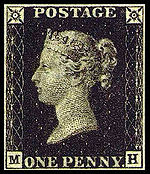In my previous blog, I discussed about one of old Post-Independence Indian stamps issued in 1949 commemorating the Lingaraj Temple in Odisha,India. This blog shall be about one such stamp dedicated to the famous Sun Temple in Konark, located in the Eastern India province of Odisha.
For details on visit, stay and tourist package, you may contact at the above phone no.s or simply e-mail them :)
In my next blog I shall start writing about pre Independence princely state stamps.
The stamp was issued on 1st July,1966 in grey color having value of 6 (Naya) paise. I tried hard to find its record in Stanley Gibbons Stamp Catalogue for India, but unfortunately I am still to find out at least in my edition of the catalogue. . Hence I haven't mentioned its SG No. in my blog. The stamp has "KONARK ELEPHANT" inscribed in English at the bottom and in Hindi at the top left corner. It carries the image of a ceremonial elephant decorated with ornaments and jewelry.
 |
| KONARK ELEPHANT ; 6p ; 1st July,1966 |
The stamp says about a place called 'Konark' with an unmatched historical significance owing to brilliant and impeccable architectural splendor of ancient Kalinga (the modern day 'Odisha'). The Konark is well-known for the Sun Temple dedicated to the Sun God. Besides the temple it is also popular for its roaring sea waves and beautiful beaches world wide.
For more information on this ancient temple, visitors may visit the following link :
It may be interesting to know that the Sun Temple of Konark in Odisha is one of the major tourist attractions across the globe. Every year thousands of tourists, history and archaeological students and academicians from round the globe visit the Sun Temple to appreciate, study or carry out extensive research on ancient Odia architecture ( also called as Kalingan architecture named after the ancient name of Odisha - 'Kalinga').
The temple can be conveniently reached by means of local bus service, cabs or other local public transportation services available from the city airport or railway station.
There are frequent air and rail connectivity to Bhubaneswar too, from all major cities in India. For detailed information one may click on the Official Odisha Tourism Dept. Website.
Till then, happy collecting :))









-2.jpg)
.jpg)








